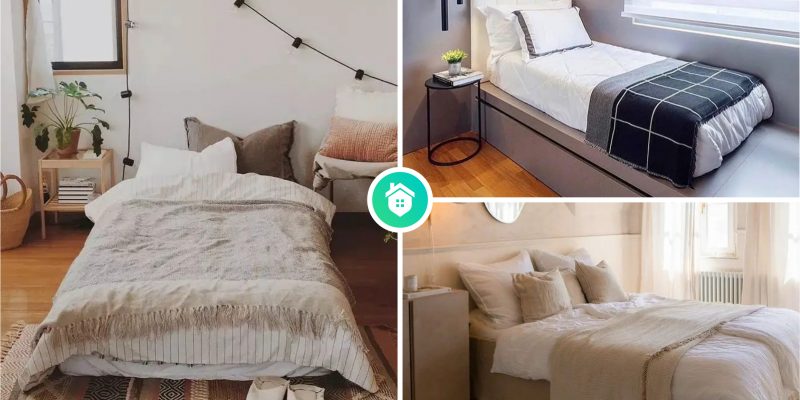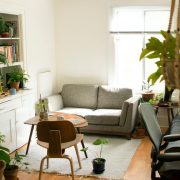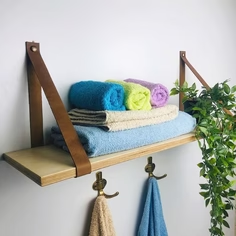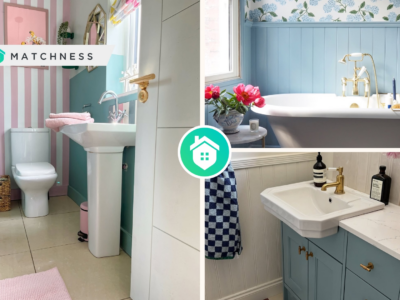If you want to create a stylish and functional bedroom in a small space, it’s important to think about how to arrange things. Small bedrooms can be challenging because they may have limited floor space, low ceilings, or unusual angles. However, with careful planning and creative ideas, you can make the most of these limitations and give your small bedroom a unique and practical touch.
The good news is that there are many clever ways to make a small bedroom look and feel bigger. These include things like arranging furniture in a smart way and coming up with creative storage solutions. To help you get inspired, we’ve put together some ideas for arranging your small bedroom to make it a cozy and inviting space.
Think About How Your Bed is Positioned
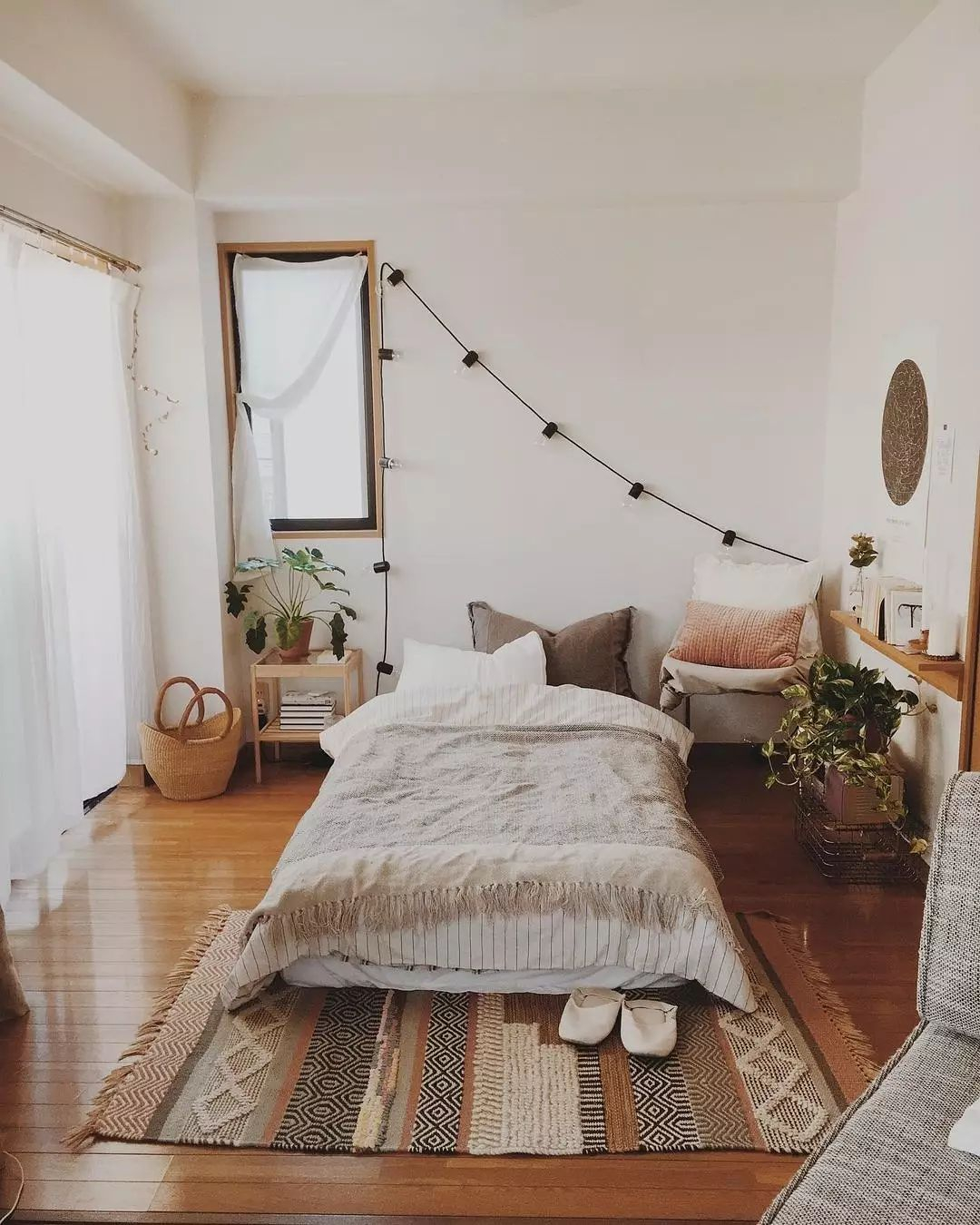
Placing the bed in the middle of a wall provides maximum functionality by allowing easy access to both sides of the bed. Tasks like bed-making and sheet-changing become effortless with this arrangement, highlighting its practicality and user-friendliness. Gorgeous bedroom from @ mybedroomidea
In the realm of small bedroom layout ideas, one of the most significant choices revolves around the positioning of the bed. As the largest piece of bedroom furniture, its placement holds substantial influence over the overall ambiance and functionality of the space. In compact settings, the bed’s positioning is often constrained by the room’s dimensions, yet there remains room for deliberate decision-making.
In the context of bed arrangements for small bedrooms, maintaining a sense of symmetry is key. Experts suggest centralizing the bed along a primary wall, striving for balance in the layout. Moreover, it’s advisable to ensure the bed doesn’t obstruct any windows, whenever feasible, to enhance the room’s aesthetic and lighting.
Positioning the bed at the center of a wall offers optimal functionality as it grants convenient access to both sides of the bed. Tasks such as making the bed and changing the sheets become hassle-free with this placement, emphasizing its practicality and ease of use.
Put the Bed in the Spotlight
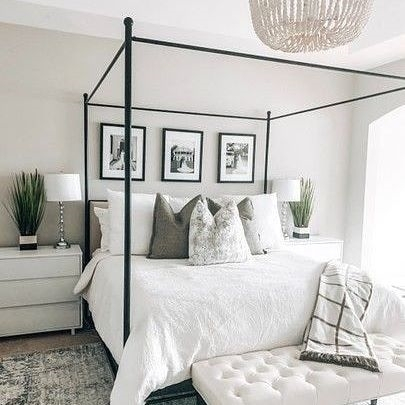
Positioning an attractive bed at the central point of the main wall in a small bedroom, as illustrated in the image above, is an intelligent method to create a perception of a larger room. This arrangement immediately captures attention and diverts focus from the room’s limited dimensions. The timeless design additionally infuses a lively ambiance into your space, contributing to its enduring appeal. Bedroom from @ smallbedrooms
Placing a beautiful bed in the middle of the main wall in a small bedroom is a smart way to make the room feel bigger. It quickly grabs attention and takes the focus away from the room’s size. In smaller rooms, you have to carefully choose what furniture to include. We suggest making the bed the centerpiece because it’s the most important part of any bedroom. Pick a timeless design that you can easily update, keeping your room looking lively and appealing.
Keep It Simple
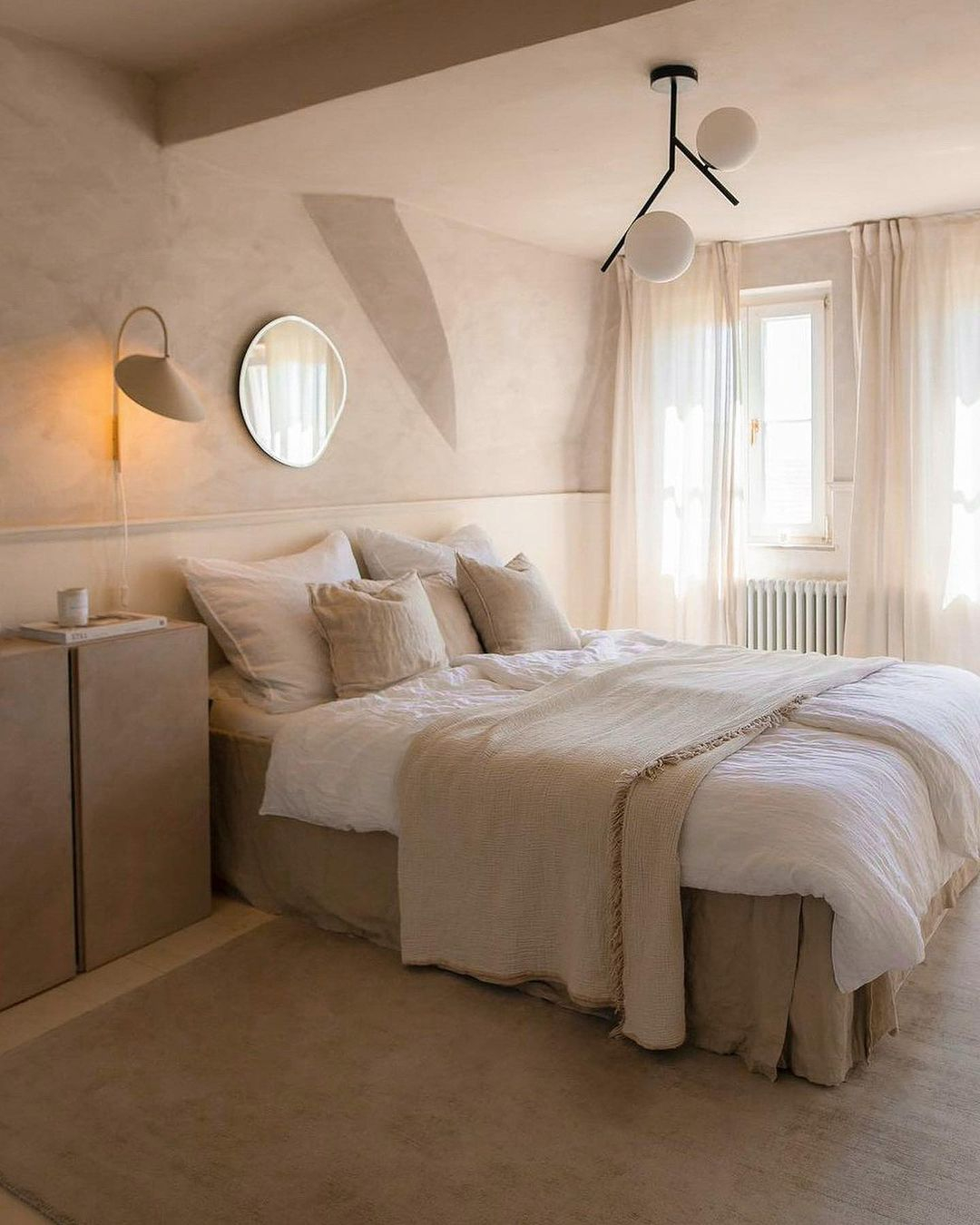
When designing a small bedroom, it’s important to carefully consider the size of each furniture piece and maintain a simple approach. Striking the right balance is key—avoid overcrowding with excessive furniture, yet ensure there’s enough to meet your needs and create a comfortable space. Small bedroom from @ elaperona
Creating a bedroom in a small space works best when you have just the right amount of furniture. It’s like the Goldilocks story – not too much, not too little, but just right. Consider the size of each furniture piece and keep it simple. Tailor your choices to fit your bedroom’s unique dimensions. When it comes to the bed, choose a size that suits your room well. You wouldn’t want the main attraction, the bed, to seem out of proportion in your space.
Create a Cozy Sleeping Nook with Curtains
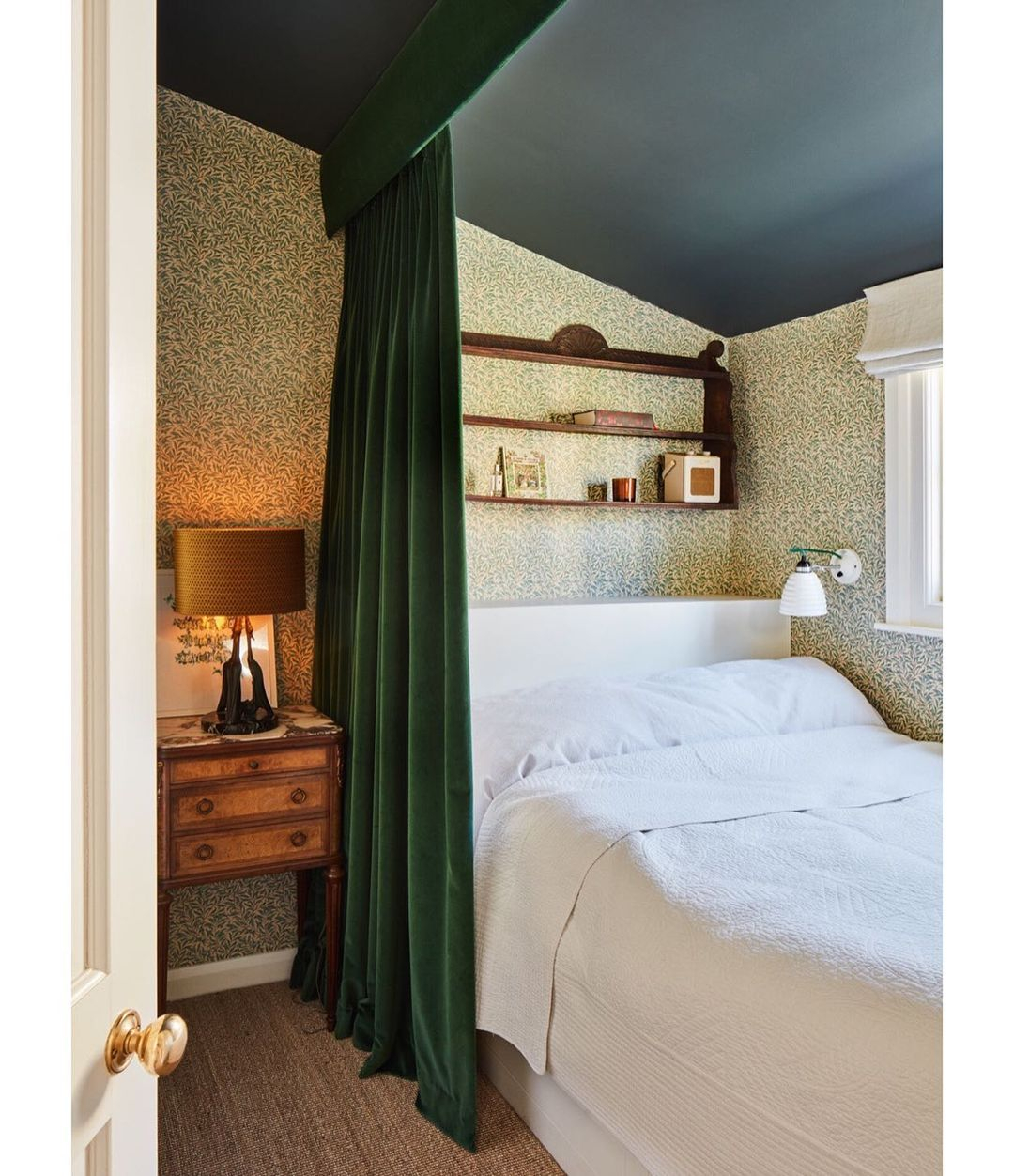
In most bedrooms, the bed is usually placed in the center of the longest wall. However, in a small bedroom, this might not be the best use of space. Putting the bed in a corner can free up more floor space in the room, making it feel more open. Bedroom with curtain from @ lldesign_interiors
If you have a small, narrow bedroom with low ceilings, optimizing the cozy space becomes crucial. One effective approach is to snugly fit the bed into a corner of the room and use floor-to-ceiling curtains to craft a charming hideaway.
Typically, in most bedrooms, it’s conventional to place the bed in the middle of the longest wall. However, in a compact bedroom, this may not be the most efficient use of space. Enclosing the bed into a corner can actually liberate more floor space throughout the rest of the room, providing a sense of openness.
Add Mirrors
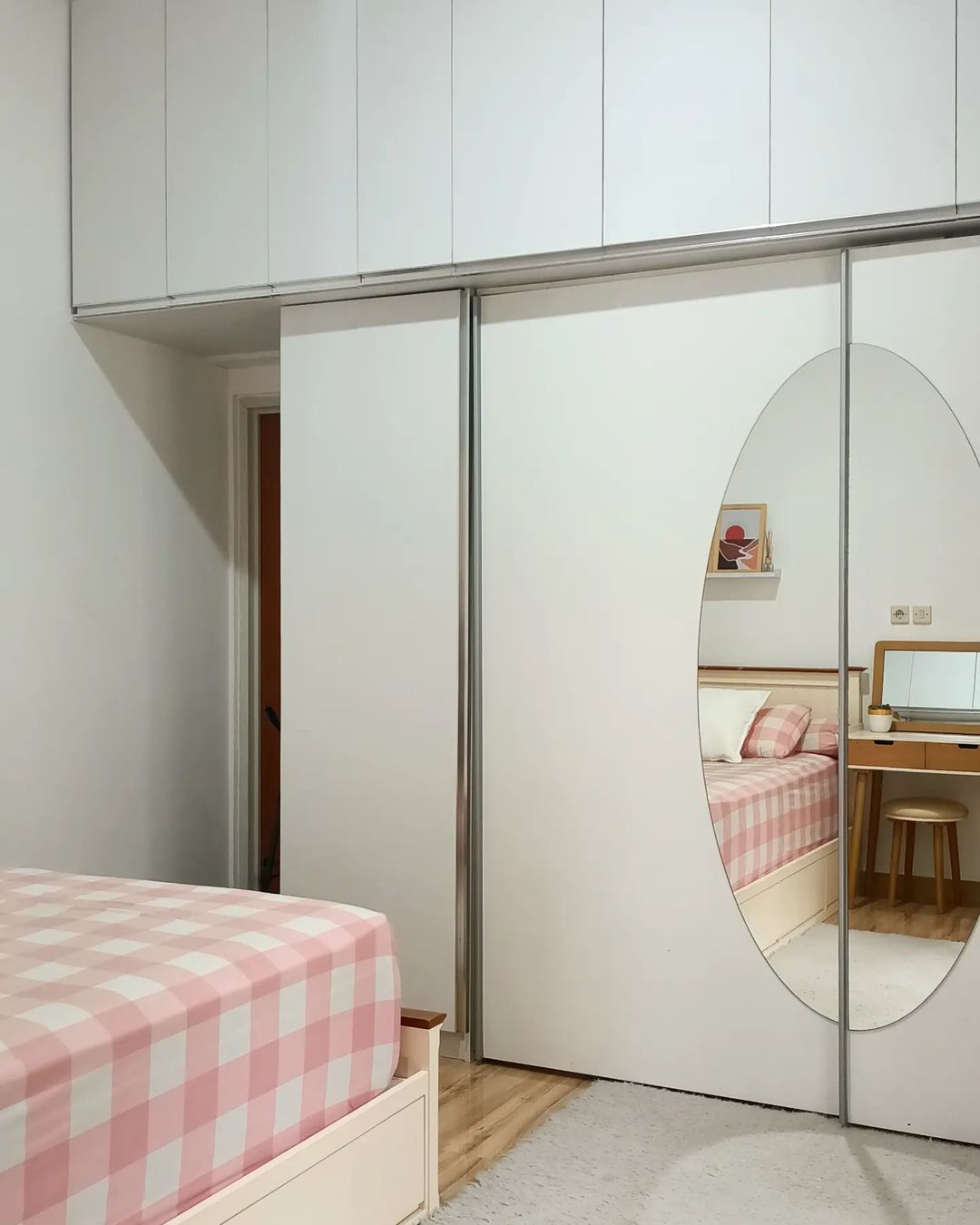
Adding mirrors to your decor is a fantastic way to instantly make a small bedroom feel more spacious and brighter. Bedroom design from @ nenih_craft
Incorporating mirrors into your decor is a fantastic strategy to instantly enhance the spaciousness and brightness of a small bedroom. It’s highly beneficial to integrate mirrors into your small bedroom layout whenever feasible. Placing them across or beside a window will enable the optimal reflection of light, amplifying the room’s illumination.
Create A Cozy Bed Nook

When striving to optimize space, consider a bed nook as a superb solution. It entails smartly positioning the bed within a defined area or alcove, typically against a wall or in a corner, to effectively utilize the room’s arrangement. Bed nook from @ sanchi.home
When aiming to maximize space in a child’s bedroom, envision the concept of a bed nook as a stellar solution. A bed nook involves cleverly situating the bed within a designated area or alcove, often against a wall or in a corner, to efficiently use the room’s layout. This design choice doesn’t just revolve around space utilization; it incorporates an element of excitement that genuinely appeals to kids. Picture it as a special retreat within their own room, where the bed is snugly enveloped in its own nook, providing a sense of coziness and privacy. For children, this setup is akin to creating a mini-hideaway, and the joy they experience in this personalized sleeping space is palpable. It’s not only about saving room; it’s about enriching their environment with a touch of adventure and comfort, making bedtime an exciting and enjoyable prospect each night.
Integrate a Concealed Dressing Table
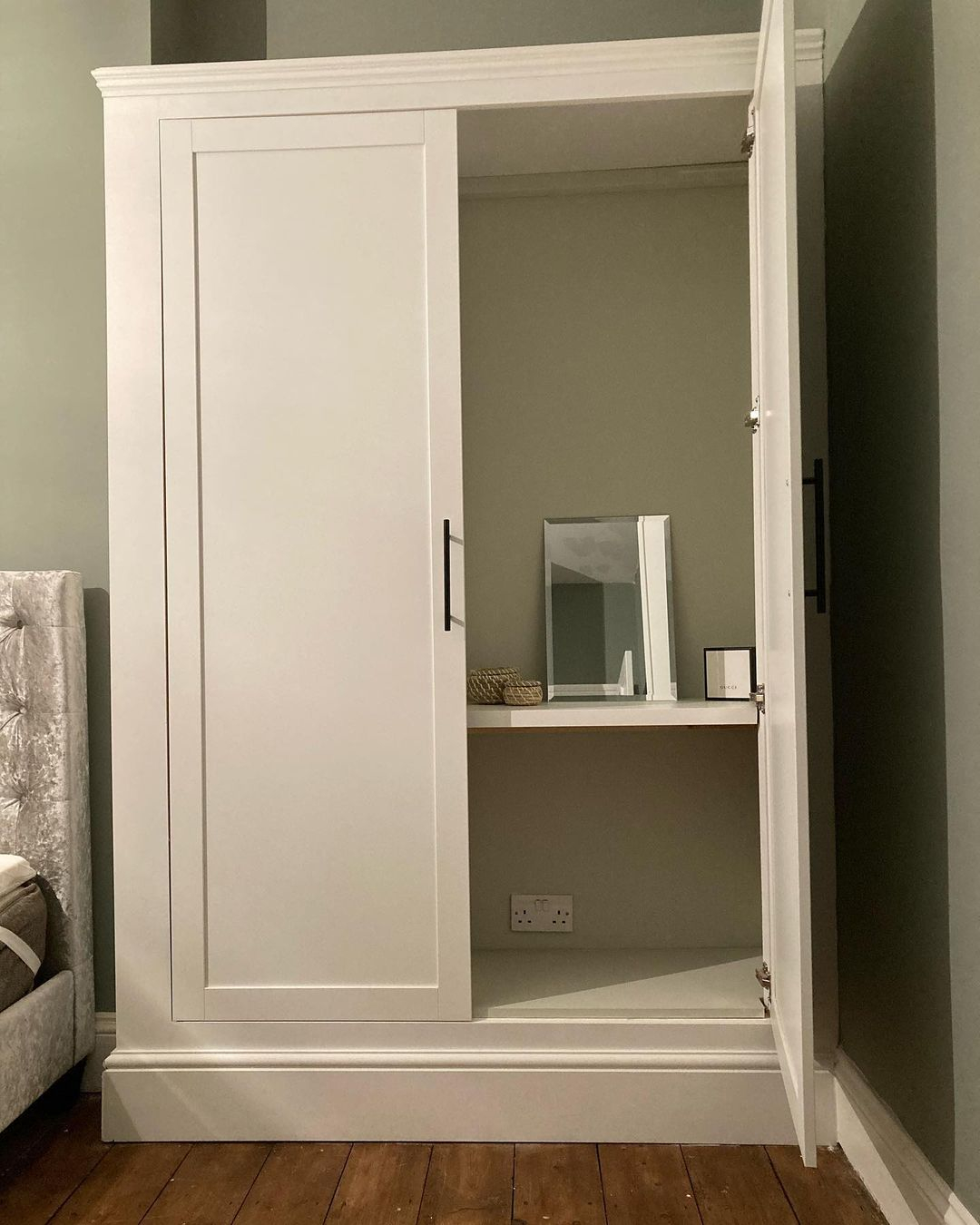
The design approach of a concealed dressing table not only optimizes space but also preserves a neat and uncluttered look in the room. Hidden dressing table from @ thebakers.house
Incorporating a concealed dressing table into your bedroom involves seamlessly integrating this functional piece of furniture into the overall design of the room. The term “hidden” suggests that the dressing table is not immediately visible or prominent, adding an element of subtlety and clever design. Often, these dressing tables are ingeniously tucked behind or within other furniture, such as a mirrored cabinet or a sliding panel, when not in use. This design approach not only maximizes space but also maintains a clean and uncluttered appearance in the room. When needed, the dressing table can be effortlessly accessed and unveiled, providing a designated space for grooming and getting ready, making it a practical and stylish addition to any room.
Optimize the Use of Alcoves
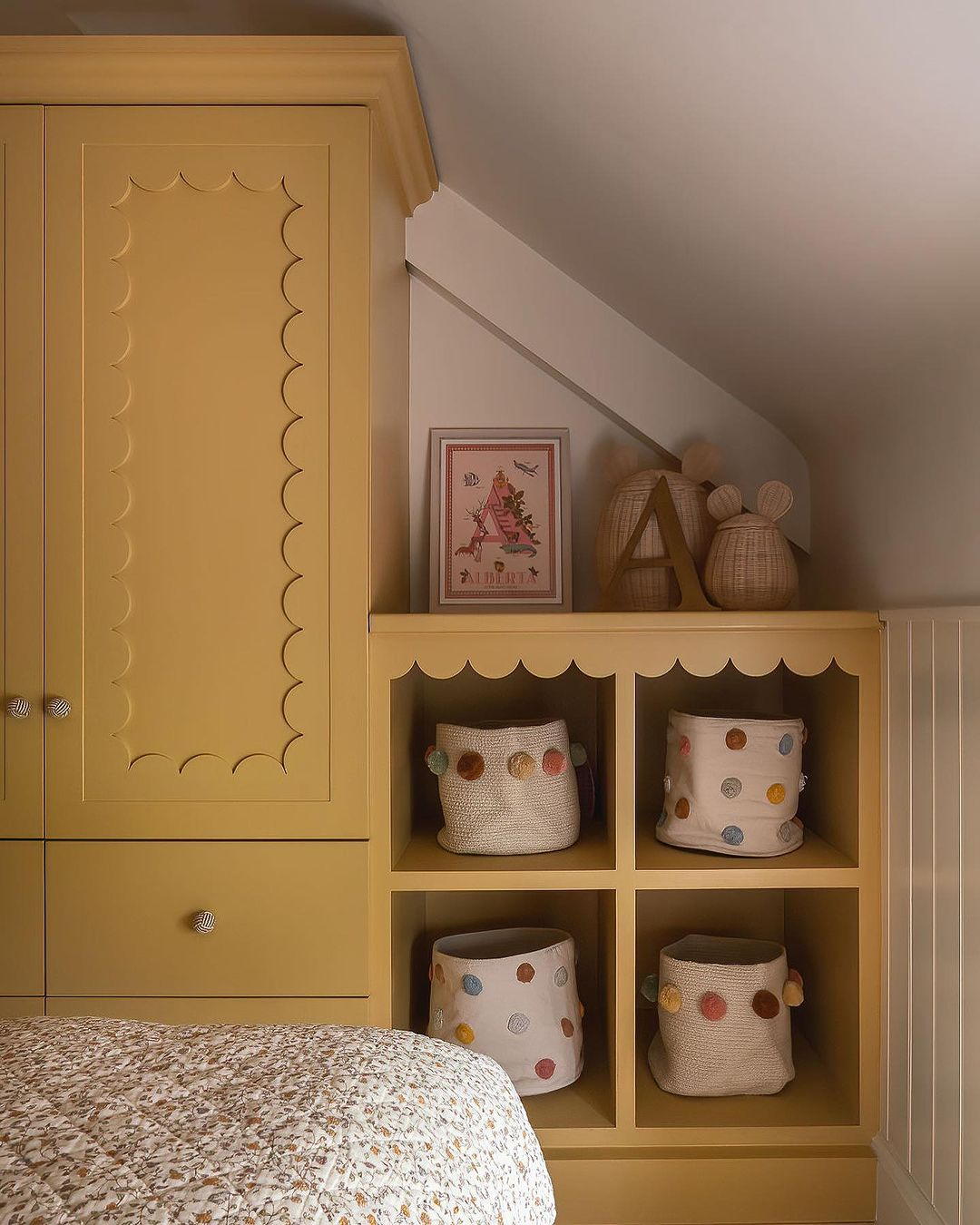
Effectively using every bit of the room is crucial to unlock its full potential. An especially efficient way to maximize space in a small bedroom is by making use of peculiarly shaped alcoves. Smart storage from @ houseninedesign
Incorporating numerous storage solutions tailored for small bedrooms within your layout is crucial, especially when dealing with limited floor space. Effectively utilizing every inch of the room is essential to optimize its potential. A particularly effective method for maximizing space in a compact bedroom is leveraging oddly shaped alcoves. By integrating custom-built fitted wardrobes into these spaces, you can create a seamless storage solution. Additionally, you could cleverly incorporate a designated dressing table area within these alcoves, enhancing both functionality and aesthetics within the room.
Opt for a Loft Bed in a Child’s Bedroom

A loft bed serves as an excellent solution. It’s an elevated bed that creates an open space beneath, allowing for diverse uses such as setting up a study nook, a play area, or even additional storage. Loft bed from @ sarasilva.1994
When it comes to maximizing space in smaller children’s bedrooms, choosing a loft bed is an ideal solution. A loft bed is a raised bed that provides an open area beneath, which can be utilized for various purposes like creating a study nook, a play area, or even additional storage. By elevating the bed, you free up a significant portion of the floor space, making the room feel more open and less cramped. This is especially beneficial in smaller rooms where every inch matters. Additionally, loft beds often come with built-in features like desks, shelves, or drawers, adding to their space-saving and organizational benefits. Not only do loft beds optimize space, but they also add an element of excitement and adventure for children, making bedtime and playtime more enjoyable.
Optimize Space Using Wall Lights
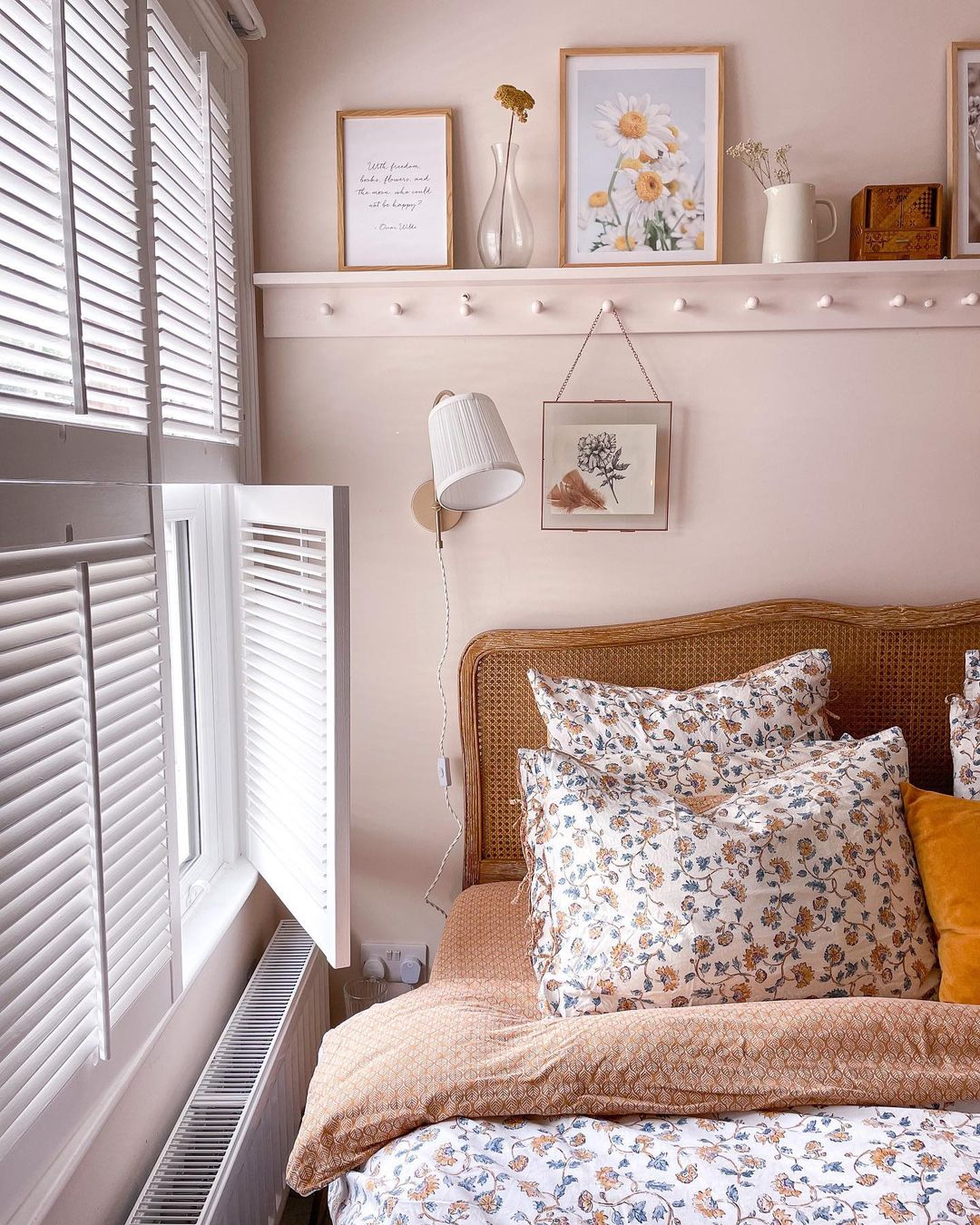
Exploring other choices for bedroom wall lighting is a wise decision for a compact bedroom, offering a smart solution for small spaces. Bedroom idea from @ shelley_cottage
Traditional table lamps placed on bedside tables on either side of the bed are a common bedroom lighting setup. However, in smaller bedrooms, this arrangement can consume a significant amount of space. Therefore, considering alternative options for bedroom wall lighting can be a smart move. Using wall lights instead of table lamps for bedside illumination is a clever strategy. In compact rooms, opting for smaller bedside tables is necessary, and when a table lamp occupies most of the surface, it defeats the purpose of saving space.
Fortunately, there’s a diverse range of fantastic wall light choices available, whether wired or plug-in. These alternatives not only make a statement in the room but also maximize the surface area for storing personal items next to the bed.
Maximize Vertical Space with Built-In Closets
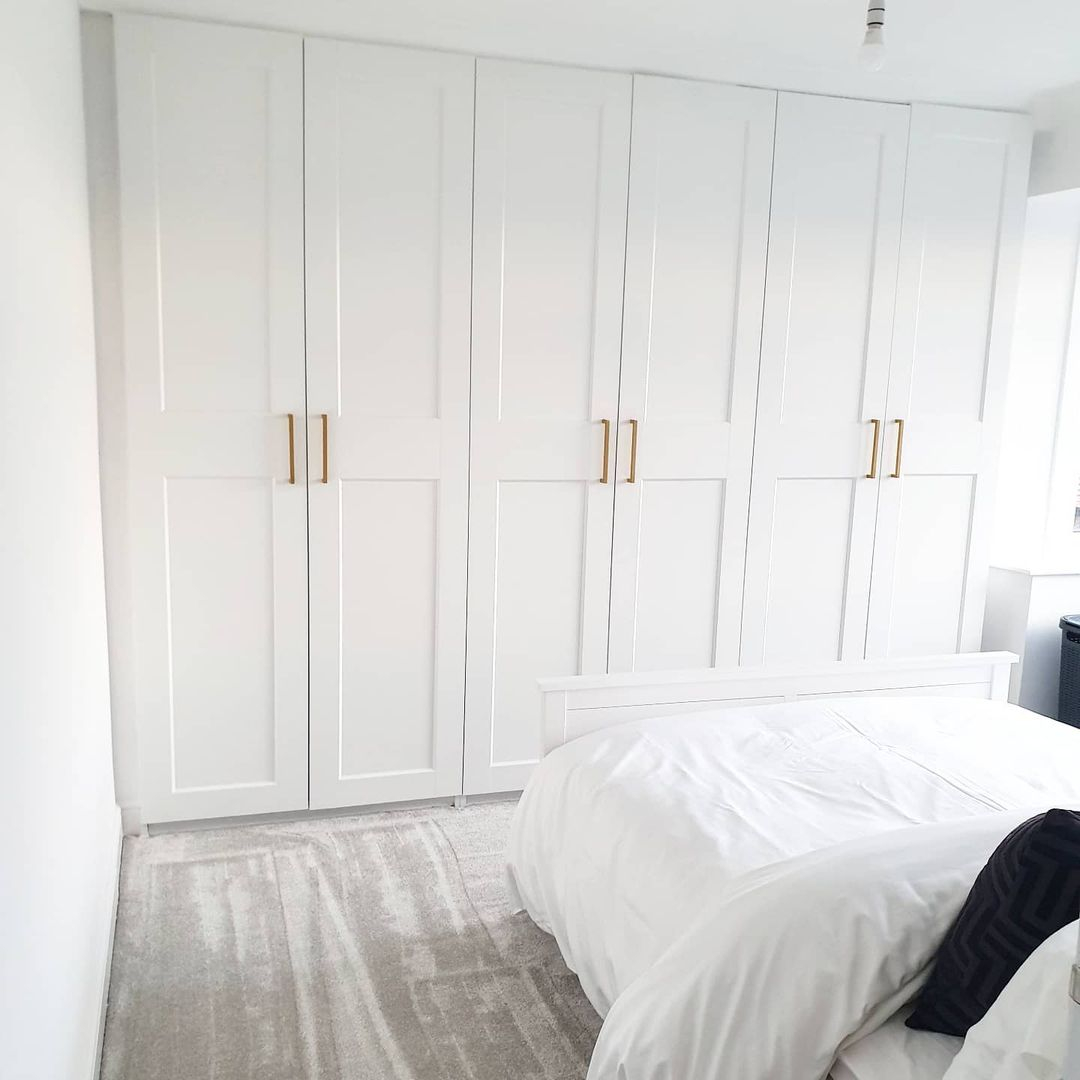
Setting aside a portion of the bedroom for storage by installing a series of tall, floor-to-ceiling closets is an excellent approach to maximize storage solutions while maintaining a neat and spacious ambiance. Fitted closet from @ itsinsidethatcounts
In compact living spaces, integrating various small bedroom storage ideas is essential to maintain an organized and uncluttered environment. Designating a section of the bedroom for storage through the installation of a series of tall, floor-to-ceiling closets is a superb strategy to optimize storage solutions while preserving a sense of tidiness and roominess.
To augment the perception of ample space, opt for uncomplicated wardrobe door designs like tongue and groove, and paint them in a hue matching the wall color. This creates a seamless visual flow and further contributes to the illusion of a more spacious room.
Opt for Built-In Shelving

In this bedroom, the focal point is created using recessed shelving and vibrant accessories. Bedroom design from @ laurastephensid
Accommodating large, standalone furniture in a small bedroom layout can often be a challenge. A great alternative is to consider fitted cabinetry or built-in furniture. These types of furnishings are customized to fit the available space perfectly. Fitted cabinetry can be designed to reach from floor to ceiling or cover an entire wall, making the most efficient use of the room’s layout. Not only do they provide ample storage for clothing, accessories, and personal items, but they also blend seamlessly with the room’s design, offering a clean and organized appearance. Additionally, built-in furniture can be tailored to include specific features like hidden drawers, fold-out desks, or pull-out racks, further enhancing their functionality and versatility in a limited space.


